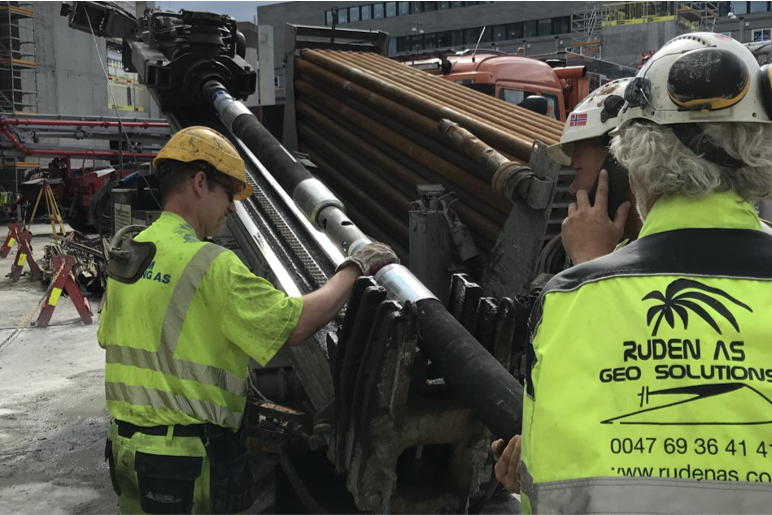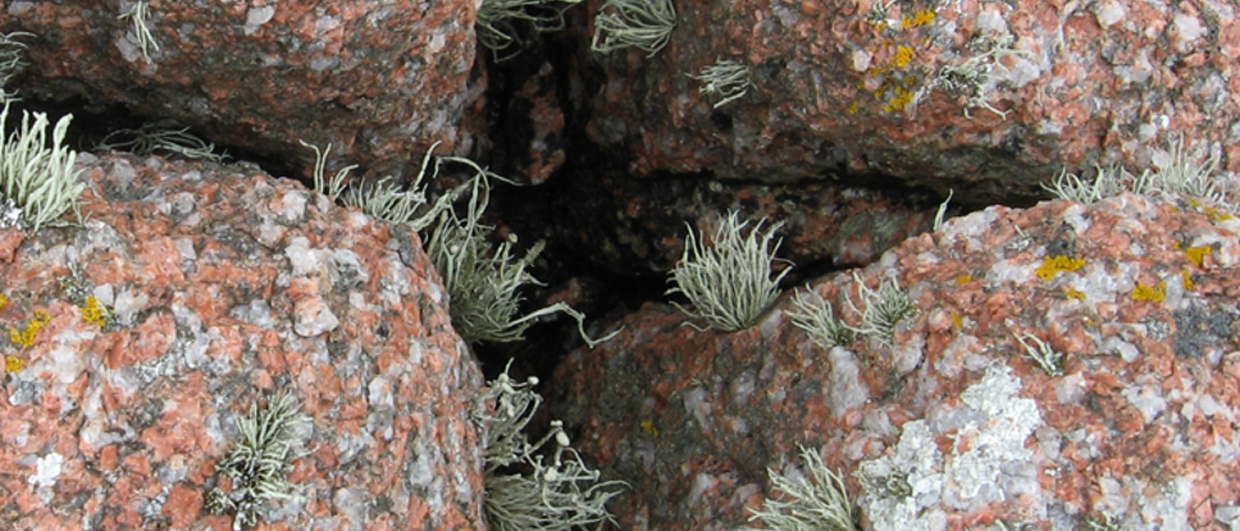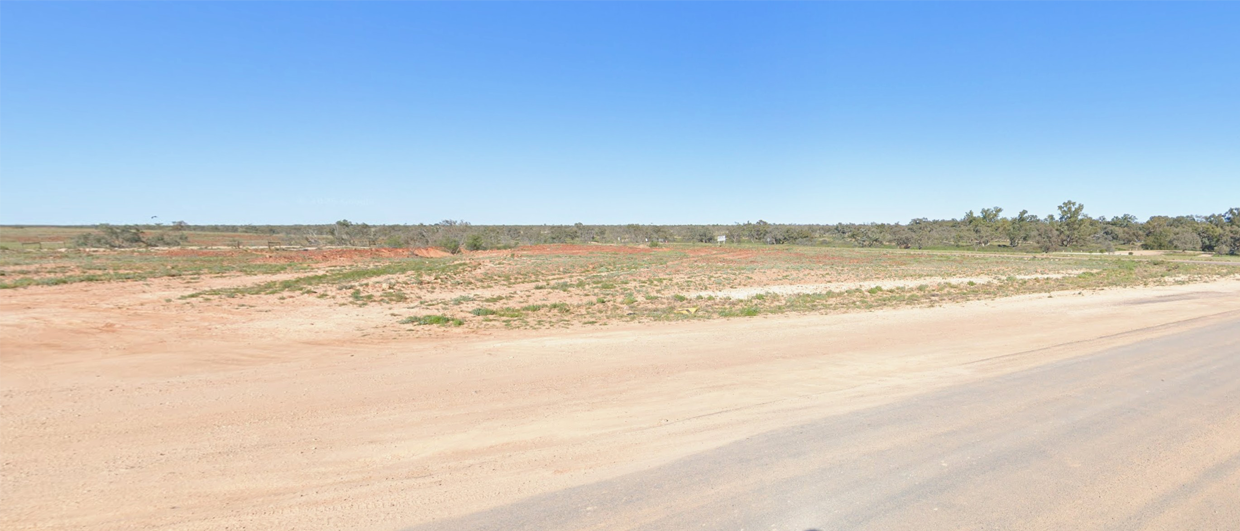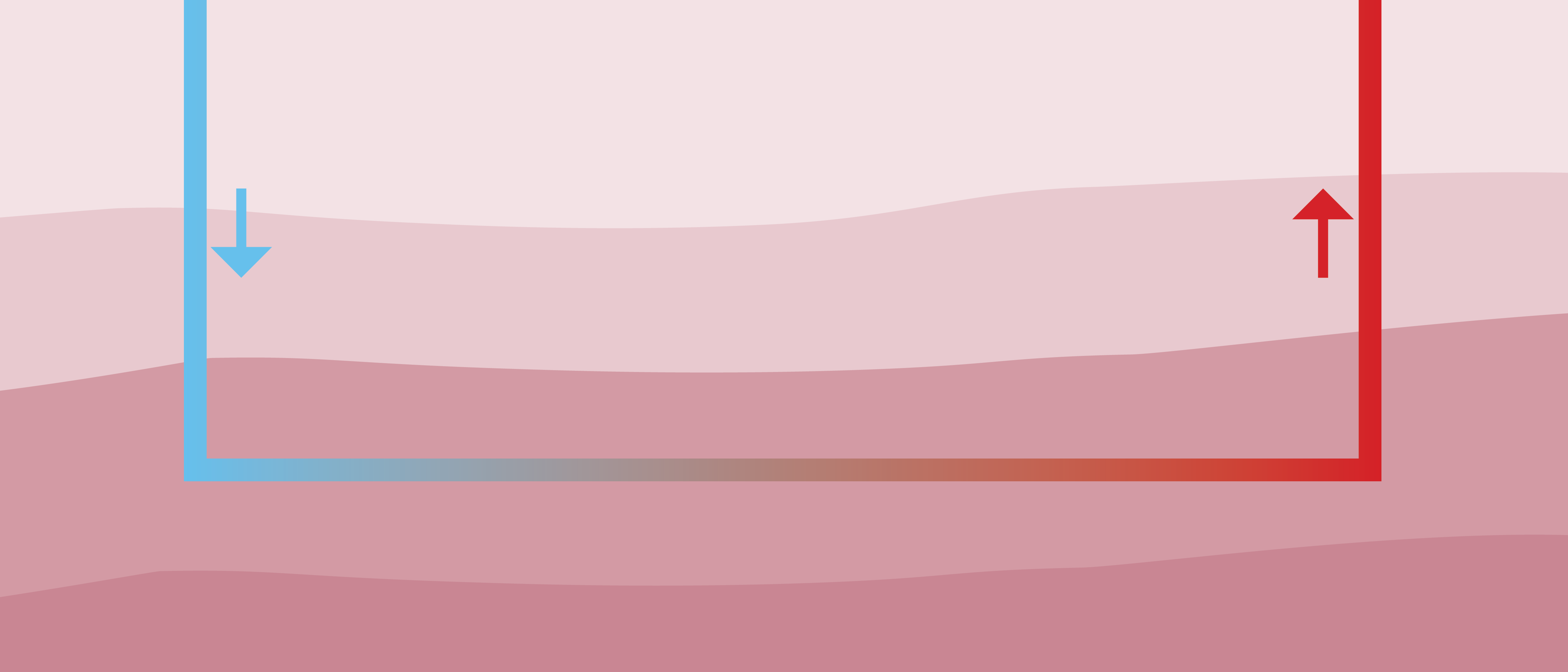In the North Sea oil and gas sector, production from fractured basement is in the spotlight these days, given the Lancaster field development in the UK and the recently announced start of a production test from the Rolvsnes discovery by Lundin in the Norwegian sector.
The understanding of fluid flow in fractured systems is not only important for the production of oil, but also key for the design of open geo-energy systems for heating and cooling.
Norway-based company Ruden AS is currently working on a unique project just southwest of Oslo, Norway (Wesselkvartalet in Asker) whereby 18 wells of around 400 m depth are drilled into fractured sedimentary strata with the aim to produce 9-12 degrees C water, extract heat from it through cooling it down by 5 degrees C, and subsequently re-inject it again.
Even though the wells of the Asker project have not literally been drilled into fractured crystalline basement, porosity and permeability of the targeted Palaeozoic sedimentary succession is close to zero. This means that the project relies on the fracture system for successful water circulation.
Analogue to oil reservoirs
Manon van Goethem, geologist at Ruden, agrees that there is a strong link between the Asker project and production of oil from fractured basement offshore. “Similar to oil production from fractured basement,” she says, “the placement of the injector and producer wells (no net extraction takes place) for our project is key in order not to have “cold” water breakthrough too quickly.”
Pumping rates
In order to meet the required energy demand for the Asker project, pilot wells have been drilled to test the capacity of the subsurface to both produce and re-inject the water. Based on these findings, decisions on well spacing, well numbers and the need to further stimulate the formation were taken.
The deeper wells currently have a total circulation capacity of 30 L/s (based on a total of 18 wells). This translates to a circulation of 16,302 barrels a day, which is higher than what the single well on the Lancaster field produces on a daily basis (the latest data show 11,400 barrels/day). The plan is to double flow capacity of the deeper wells in the Asker area through stimulation.
The shallow system has a circulation capacity of about 80 L/s, which is equivalent to 43,471 barrels a day. This was achieved by hydraulic fracturing, resulting in an average increase of the well capacity of 100%.
Stimulation
In order to further enhance fluid flow, stimulation is something that is routinely carried out in Norway. This has also been applied to the wells at the Asker project, where stimulation of the shallow wells increased the volume of groundwater that can be circulated through the aquifers (the deeper wells will be stimulated next year). In contrast to what many people may think when hearing about hydraulic fracturing or stimulation, no chemicals or propants are being used at all and because the depths at which it is performed are much shallower, the risk of induced seismicity is very much reduced as well.
Geological setting
The subsurface of the Asker area is characterised by carbonate and shale formations of Ordovician to Silurian age. Due their burial history and fine-grained nature, there is no remaining porosity nor permeability, but fracture networks exist due to extensive faulting.
Downstream and upstream
A marked difference between relatively shallow depths at which the Asker project operates and deeper offshore reservoirs, is that groundwater flow is an element to be more aware of when planning well locations. “That’s why we develop a proper understanding about the direction of flow at target levels through modelling the structure, fractures and faults combined with groundwater flow. We obtain essential subsurface data using a suite of well logging tools, similar to what is being used in the oil and gas industry. In this way, we can place the injectors “downstream” relative to the natural groundwater flow direction,” Manon adds.
Buffer
The presence of a shallow aquifer in the Asker area also enabled Ruden to carry out the second aspect of this project, which entailed drilling of up to 98 shallow wells for the storage of energy for peak demand. “For example, a lot of energy is required in case of snow fall and the de-icing of pavements,” Manon says. “Building up a buffer in times of low demand will ensure that during those short spells where demand is high, our system can still meet this.”
HENK KOMBRINK






